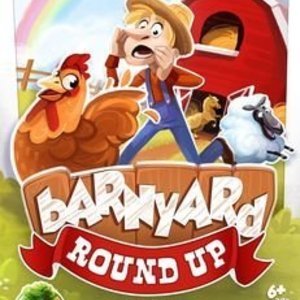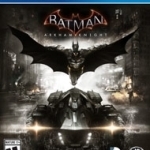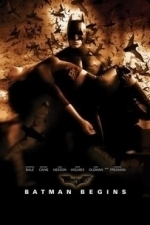
Oz Temple: The Wonderful Wizard of oz Powerful stories with Great videos
Education and Entertainment
App
Once upon a time, we had just books! But now presenting a visual journey as well! Experience Oz like...
Purple Phoenix Games (2266 KP) rated Barnyard Roundup in Tabletop Games
Apr 12, 2021
Barnyard Roundup is a silly game of bluffing and hand management set on a farm. In it players are farmhands trying to help Farmer Brown sell the most animals at market. They do this by bluffing their hands in trade deals with other farmhands, thus making no friends in the process. The player with the most points at the end of the game, when all cards from the draw deck have been drawn, will be the winner!
DISCLAIMER: We were provided a copy of this game for the purposes of this review. This is a retail copy of the game, so what you see in these photos is exactly what would be received in your box. I do not intend to cover every single rule included in the rulebook, but will describe the overall game flow and major rule set so that our readers may get a sense of how the game plays. For more in depth rules, you may purchase a copy online or from your FLGS. -T
To setup place the five Animal Bonus cards in a line with the Set Bonus cards nearby. Shuffle the large deck of animal cards and deal out cards according to the rulebook per the number of players in the game. The Burglar and Excuse Me tokens are sorted and dealt out with the remainders face-down near the other cards. Remove eight cards from the draw deck and decide who will be the start player. The game may now begin!
Barnyard Roundup turns are quite simple: take two or three actions and end the turn. The first action is mandatory and it is Passing Cards to another player. Choose anywhere from one to six cards, place them face-down on the table in front of the player with whom to be traded, and announce the number and type of cards to be traded. For example, a player may say, “This is four chickens.” The targeted player now must decide whether that group actually IS a group of four chickens or if they believe the trader (not traitor) is bluffing. If so the targeted player may say, “That is NOT four chickens.” Once the agree/disagree statement has been made the cards are flipped over to see which player will be adding the cards to their pens. If the targeted player guessed correctly then they will received all the animal cards that were passed to them. That is, unless the cards were actually CROWS. Crows are worth -5 VP at the end of the game (see the photo below) and will be taken into the pen of the defeated player in the trade. In addition to crows (bad) the game includes Copy Cats (good) which can be wild cards to be placed with other animals and they copy the animal in their group. When the trade is resolved the active player may choose to perform the next step, but it is not mandatory.
Players must note that any time a player gains crows that would extend their collection of crows to any multiple of 3 that player must then draw another Action Token (Burglar, Excuse Me, Scarecrow) from the supply. If a Scarecrow is drawn it is immediately revealed and three crows are discarded from that player’s collection. The Excuse Me token may be used during a trade, but before cards are revealed, by a player not involved in the trade. When they announce, “Excuse Me,” they immediately take the place of the targeted player and will decide whether the trade is correct as announced or is a bluff.
Should they wish, the active player may now Play a Burglar Token from their collection in order to target another player and ask for all of their animals of a specific type – “I wish to procure all of your cows” That player must then immediately hand over all their cows, or else may tell the active player to Go Fish. Okay, that last part isn’t in the rules, but I started doing it and it stuck for me.
The third and final step of a turn is simply to Draw Cards and End Your Turn. Draw cards back up to the hand limit of 5 or 6 and end the turn. Play then passes to the next player.
Play continues in this fashion until the last card has been drawn. The game ends immediately and players tally their points per the rulebook to arrive at an ultimate winner!
Components. This game is a bunch of cards and some tokens in a double-wide+ tuckbox. I love the art, and that makes sense as it is illustrated by Lina Cossette, half of Mr. Cuddington. If you don’t know about Mr. Cuddington, please check out their website. The cards are good quality, as are the tokens. But that box. Now, it LOOKS great, and is a fine size. But a tuckbox? I would have preferred a lidded box, or even one of those with the magnetic fold-out lids. But it’s a tuckbox and the opening flap dented upon its first opening. Oy. I could give a chef’s kiss to everything else though.
Now, there’s a reason why I rated this game a 4 and my wife a 6: she beats me every single time we play and I just cannot find the strategy to take her down. Am I just horrible at bluffing games? Does she just dominate me at ALL games? I’m not sure, but this one certainly highlights the fact that she’s just better than me. I can still hear her haunting and taunting me with, “OH MY GOSH I LOVE THIS GAME! I’M SOOOOO GOOD AT IT!” Meanwhile I am sitting pretty with a whole flock of crows laughing at me like I am the Scarecrow from Wizard of Oz. Perhaps I am truly brainless as well.
That said, the game is enjoyable. I do like to play bluffing games, but I’m the poor soul who would rather play straight than do ANY sort of bluffing at all. Except when I have lulled my prey into trusting my every declaration. Then pull out the big guns and laugh my way to the bank. Well, I tried that several times and no dice. But I do enjoy playing, and I do keep coming back for more torture. And if that isn’t a sign of a good game, then what is?
All in all the game is quick, light on rules, and features wonderful art style. This is the game I will probably use to introduce my children (or new gamers) to bluffing games as the theme is easily digestible and when you get stuck with the negative points you don’t feel super bad about it. It is easy to pronounce that Purple Phoenix Games gives this one a squawkin’-good 10 / 12. If you are looking for a light introductory game to teach bluffing or to hit that sweet-spot, then I recommend you check out Barnyard Roundup from Druid City Games. I ain’t a-bluffin’ ya.
Gareth von Kallenbach (980 KP) rated the PlayStation 4 version of Batman: Arkham Knight in Video Games
Jun 19, 2019
After the Scarecrow has launched an attack on the city, it is up to Batman to save the day as the mass exodus caused by the attack has left Gotham a shell of its former self and allowed more of the seedy underbelly of the city to come to ground.
As Batman investigates he encounters all sorts of foes ranging from Poison Ivy to the Arkham Knight who stand in his way. Of course there are legions of henchmen and goons for you to fight through and the free-form combat that has been established in the previous games in the series really shines as the action is as fast and smooth as you would want.
Driving segments played a big part in the game and while I loved racing through the city, I did find the vehicle combat a bit linear and repetitive for my taste, but there are some great side missions such as one in the sewers with the Riddler that will put your driving skills to the test.
What I loved about the game was that the city was a true living and breathing city. It is vast, complex, and something to enjoy when you’re gliding or rappelling your way across the rooftops.
The plot of the game is also a huge selling point as it is filled with twists and turns that will keep you hooked during the entire time that you are playing the game.
From the great graphics and action, the sound quality in the game really makes things come to life, especially the thuds of your fists hitting the next bad guy who was crazy enough to think that they could get away from Batman.
If you are a fan of the previous Batman games in the series, there is much to like about Arkham Knight as aside from the Batmobile issues, I had very little to complain about. The control system works well, the graphics, and sound are first-rate, and the storyline is gripping and engaging.
I look forward to playing the game again and focusing more on the side quests, but for now, let me say that Batman: Arkham Knight is a must own for fan of the series as it is on par with the amazing Arkham Asylum for the best Batman adaptation to date.
http://sknr.net/2015/07/28/batman-arkham-knight/

Wizard of Oz: Casino Slots
Games and Stickers
App
Play Wizard of Oz Slots, the only FREE casino slots game from the Emerald City! Join Dorothy,...
Chris Sawin (602 KP) rated Scary Stories to Tell in the Dark (2019) in Movies
Aug 11, 2019 (Updated Aug 11, 2019)
The horror film directed by André Øvredal (Trollhunter, The Autopsy of Jane Doe) follows a group of teenagers in the small town of Mill Valley, Pennsylvania during Halloween in 1968. Stella (Zoe Colletti) is a die-hard fan of the horror genre, Auggie (Gabriel Rush) is a bit too infatuated with girls for his own good, and Chuck (Austin Zajur) lives on candy and pranks when he’s not driving his older sister Ruth (Natalie Ganzhorn) insane. They cross paths with a mysterious drifter named Ramon (Michael Garza) who joins the group seemingly out of boredom.
They initially use trick or treating as a front for revenge against local jock and full-time bully Tommy (Austin Abrams), which leads them to a condemned and rumored to be haunted house of the Bellows family. Sarah Bellows lived in isolation and dramatically killed herself because of her family. Sarah turned her devastating life into inspiration for a series of terrifying stories. After Stella discovers the book Sarah wrote her stories in, strange things begin happening in Mill Valley and everyone in the Bellows house from that night becomes a target.
The monsters of the film attempt to be as explicitly accurate as possible to Stephen Gammell’s original illustrations from the Scary Stories books. This typically pays off, especially with Harold the Scarecrow and The Toe Monster but it seems to backfire with The Pale Lady. While she does still look like a living incarnation of Gammell’s artwork, the story has the weakest conclusion of the entire film. Scary Stories makes up for this by introducing The Jangly Man, who is seriously worth the price of admission alone even if you typically can’t understand a word that he says. The Jangly Man contorts his body in the most inhuman of ways, can separate all of his limbs from his torso, and has this bloodcurdling voice that rattles your insides.
There’s been an emphasis on the lack of a narrative in Scary Stories to Tell in the Dark. That may be true, but the film is based on a trilogy of books that is close to thirty years old and is supposed to be aimed at younger readers. The film adapts the stories in a way that isn’t totally successful, but it is surprisingly great at times. Despite some recognizable names in the supporting cast such as Dean Norris (Breaking Bad), Gil Bellows (The Shawshank Redemption), and Lorraine Toussaint (Orange is the New Black), the main cast is mostly filled with unknowns. Some reviews claim that the acting isn’t up to par, but I was pleasantly surprised. Austin Zajur can be annoying as the mischievous Chuck, but he was also rather humorous the majority of the time. Zoe Colletti goes a little overboard when she cries, but she’s also solid when she gushes over horror. Austin Abrams is seriously nasty as Tommy. He is always sweaty and has no remorse for anyone. He takes bullying to frightening heights.
I guess I expected the film to be corny (pun intended) with lame PG-13 kills and a cast that had no idea what they were doing. The film managed to make me a fan during the Harold segment. That surround sound in the cornfield is masterful with the wind blowing through corn stalks in every direction and the rusty creaking of the scarecrow as he tries to walk. How these teenagers are terrorized manages to transcend what movie ratings typically mean for a given film; this would be unsettling regardless of what it’s rated or how old the viewer is.
Scary Stories to Tell in the Dark is not a perfect horror anthology since it’s extremely simple in concept. A monster shows up, a kid disappears, and then it’s rinse and repeat for an hour and 47 minutes. At the same time though, it’s probably the scariest film of the summer and could potentially become the next big horror franchise. Scary Stories to Tell in the Dark could easily take over where the Final Destination films left off or even be this generation’s answer to that. The practical effects mixed with just the right amount of CGI for the monsters are what really sell the film. Despite being as disjointed and unnatural as The Jangly Man, Scary Stories to Tell in the Dark is way more amusing and eerie than it has any right to be.
RəX Regent (349 KP) rated Batman Begins (2005) in Movies
Feb 19, 2019
Back in 2005, the hype for this film was building, with a new take on the old comic hero taking shape. Though I must admit that the design of the new Batmobile didn’t look cool to me, but I loved the concept of rooting him in a real world. The other questionable point was that lack of the big hitters in terms of the villains. The Joker, Penguin, Riddler and Catwomen were dumped in favour of The Scarecrow and Ra’s al Ghul, with only one that I, as the un-indoctrinated in comic book lore, that I had heard of being The Scarecrow.
But this was not to be a typical Batman film in any sense of the word. In June 2005, Batman was reborn and not only had the career of an independently styled filmmaker, Christopher Nolan blown into the big leagues but Blockbusters had just been redefined, an event not dis-similar in effect t those of Jaws and Star Wars in the 1970’s.
Batman, a Warner Bros. cash cow for decades, was about to cross all the main lines within the industry and a blockbuster with art house sensibilities and real intelligence was about to born. It’s not the first, but it opened the door for Nolan and his like to change the way we think about movies of this kind. It doesn’t seem to be that long ago that Marvel was dominating cinemas was some first-rate adaptations such as X-Men, Spider-man and the underrated Hulk, which in many ways may be classed as a prototype for this, with art house direction from Ang Lee.
The plot of Batman Begins isn’t really that important though that’s not to sell it short. It’s a highly developed and conceived story, packed from the opening frame to the 140th minute, but it’s simply the perfect blend of the evolution of Bruce Wayne into Batman, and the usual diabolical plans of the super-villain, only it doesn’t feel like that when you’re watching it. It feels like a well judged story about a traumatised young man, struggling to come terms with his parents murder, and his place in the world.
Luckily for him, his family are billionaires and his butler is Alfred, or more importantly, Michael Caine! There are of course a whole host of contrivances to explain how Batman’s image was forged, how the Batcave was created and where the Batmobile came from, but no-one’s suggesting that this a documentary. This is a more grounded and psychological approach to the story of a nutcase who dressed up like a bat and fights crime without a single superpower to his aid.
But it’s how Nolan brings all this together that works so well. He addresses things so subtly that you can end up missing them if you blink, or at least fail to see them coming. Wayne is turned into a flamboyant excentric to maintain a distance from his friends, if he even has any. The Batcave never ends up looking how we’d expect either, but it is full of bats if that helps and he does park his car there.
It is not until The Dark Knight that we see a Batcave of sorts and that isn’t even in the grounds of Wayne Manor. So, the direction, conception and writing are great, what about the casting? Christian Bale is Wayne/Batman for me, though the animatistic tone to his voice maybe a little overdone, but I do get it. Katie Holmes is the weakest link and am glad that she was recast for the sequel. The rest of the players are first-rate and this may well be on of the best casts ever assembled for a single film in my opinion.
Gary Oldman, so understated as Lt. Gordon, Caine as Alfred is perfect; Liam Neeson is on top form, which he isn’t always, let’s face it and Morgan Freeman, like Oldman and Caine can seemingly do no wrong. Then there’s Hans Zimmer‘s collaboration with James Newton Howard for the score which is one of Zimmer’s best. Howard is an able composer and he clearly provided many of the excellent emotional riffs, but it was Zimmer who brought this together with his dominant, strident style, colossal beats and pacing.
The look and sound of this film sets it apart from so many of its brethren. Batman Begins is a truly original, relentless and groundbreaking movie that is the best of the comic book movies by a mile, but not necessarily the best comic book adaptation. Spider-man or Watchmen for example, may qualify for the fact that they more literally reflect their respective sources but Nolan’s masterpiece is a blueprint as to how film should tackle such adaptations.
And yes, that’s right; Batman Begins is a masterpiece if ever there was one, though a slightly lesser one in comparison to its own sequel, The Dark Knight which may have completely rewritten the handbook.

Crazy Snowboard
Games and Sports
App
Download the #1 mobile snowboard game in the world with more than 15 million players! Get ready for...
5 Minute Movie Guy (379 KP) rated Scary Stories to Tell in the Dark (2019) in Movies
Sep 16, 2019
In Mill Valley, Pennsylvania in 1968, a group of teenage friends fleeing from a band of bullies hide out in an abandoned haunted house on Halloween night. They know the story of this house well, whose folklore is rooted in the origins of their own small town. It was once owned by the wealthy Bellows Family, who according to urban legend, locked away their own daughter, Sarah Bellows, inside the cellar of their home. Sarah had been accused of killing the town’s children, and so her family kept her hidden away and attempted to erase her from existence, even removing her from their own family portraits. According to legend, Sarah wrote a book of horror stories and would read them aloud through the walls of her room to frighten the local townspeople.
While inside this haunted house, our group of protagonists; Stella (Zoe Colletti), Ramón (Michael Garza), Auggie (Gabriel Rush), and Chuck (Austin Zajur), discover the room Sarah had spent her life trapped in. Stella, an amateur horror writer herself, finds the rumored book that was written by Sarah. Upon opening it she sees that a new page is somehow being written in blood right before her very eyes, and it happens to be about the bully that chased them into the house. The next day, they realize that it seems as though the story actually came true, and that the book itself may be haunted. This establishes the basic premise of the film, in which new stories are being written in the book and they appear to be targeting Stella and everyone else that entered the Bellows’ house that night.
It’s an interesting set-up that cleverly mixes horror with mystery, as the characters are not only trying to survive these stories as they come to life, but are also trying to figure out how to stop them from happening. The film features five different stories from the series, most of which come from the third and final book, and a sixth story centered around Stella and Sarah Bellows that is at least in part inspired by one of the original tales. To give an example without giving too much away, one story for instance, involves a haunted scarecrow, whereas another is about a walking corpse in search of its severed big toe. The stories themselves are much more dark and grotesque than I had anticipated. I was expecting something more along the lines of Goosebumps, which was a series of children’s horror books that I personally loved and grew up with as a child, but these are much more disturbing than that. While I only found the first story of the film, “Harold”, to actually be scary, I do imagine this movie might be a little too frightening for some teenagers.
I should clarify that I’m not familiar with the original written source material of Scary Stories to Tell in the Dark, and I had truthfully never even heard of the books prior to the movie’s announcement. I don’t have any personal stake in these stories, but I do admire the thoughtfulness and creativity that went into building the film around them. I thought the film started out really strong with a likable cast of characters, and with most of its best moments featured early on. I loved the introduction to the haunted house and the legend of the Bellows Family. I enjoyed the playful nature of our group of young protagonists, who in the beginning felt reminiscent of the fun and crazy kids you might find in an 80s movie like The Goonies. Additionally, I liked the mystery of Sarah Bellows that the kids were trying to uncover, all the while struggling to survive the dangers of her haunting stories that had come to life.
Unfortunately, as the movie went on, I found myself less and less invested in it with each passing story, all of which I would argue are weaker than the previous one before it. The Pale Lady storyline was particularly dull and underwhelming. The final act itself, although smartly designed with its use of parallels, wound up feeling poorly executed and unsatisfying overall.
Similarly, in regards to the acting, I liked the performances even less by the end as well. Early on I had been impressed with Zoe Colletti as Stella, but I found her to be annoying in the later parts of the movie. The same goes for Austin Zajur as Chuck. The cast for the most part was decent, but everything about the movie began to drop in quality as it dragged on, which is especially unfortunate given how well it starts out.
The special effects are mostly quite good and adequately disturbing, but on the same token, I wish they were more clearly visible at times. A lot of the horror settings take place in dark rooms, so at times it can be hard to see the monsters with much clarity. Still, I love the design of Harold the Scarecrow, as well as The Jangly Man, who is played by contortionist Troy James whose extreme flexibility allows the character to move in unnatural and disturbing looking ways.
To conclude, I’m left with some mixed feelings on Scary Stories to Tell in the Dark. For me, it almost hits the mark, but unfortunately it isn’t a movie that I think I’d bother to watch again. It made a solid first impression with its rich atmosphere and creepy first act, but it failed to maintain its momentum and level of quality. In the end, my favorite thing about the whole movie is actually the excellent cover song of “Season of the Witch” by Lana Del Rey that plays during the credits. However that’s not in any way to say the movie is so bad that the credits were my favorite part. It’s just a great song by an artist I very much enjoy. If you grew up with the Scary Stories to Tell in the Dark series, then by all means, I recommend that you at least check it out. If you like horror and have any troublesome teenaged kids, this may be a perfect opportunity to have some fun scaring the heck out of them.
Lee (2222 KP) rated Scary Stories to Tell in the Dark (2019) in Movies
Aug 21, 2019
That movie version comes from Troll Hunter director André Øvredal and producer/co-writer Guillermo del Toro and attempts a Goosebumps style movie, taking some of the better known stories from the 80+ contained within the books and weaving them into a larger narrative, set in Mill Valley Pennsylvania during the fall of 1968.
It's Halloween and a group of teens are preparing to go out for an evening of trick or treating - applying makeup, getting into their costumes, fishing in the toilet for turds in preparation for a Halloween trick. They head out on their bikes but it's not long before they run into some idiot jocks from their local school, and that turd trick suddenly comes in handy! We've already been introduced to the jocks earlier in the movie, out in a cornfield where they were hitting a creepy looking scarecrow about the head with a baseball bat. Yep, they're certainly going to regret that a little bit later on!
The teens manage to escape the jocks, working their way into a drive through movie that's showing "Night of the Living Dead" and into the car of another teen called Ramón. The group strike up a bond with Ramón after he helps them out and they all decide to go and break into an abandoned local house which is reportedly haunted. They find their way into the basement where legend has it that Sarah Bellows, the daughter of a prominent local family, was locked away in the late 1800s. Horror nerd Stella comes across a book containing short scary stories that were written in blood by Sarah, and she decides to take it with them. As Stella opens the book’s pages, she sees that Sarah’s stories are literally beginning to write themselves - stories that put her friends in some pretty unpleasant situations, stories which immediately become reality the moment they're written. As Stella later puts it, "You don't read the book, the book reads you".
The setup and the scenarios within each story are enjoyable enough and are certainly creepy, however the execution doesn't always work so well and the payoffs aren't quite as scary as I would have liked. The movie also suffers from some slightly dodgy CGI at times too, which doesn't help. That said, I thoroughly enjoyed the final story, and the return to the house in order to try and stop Sarah Bellows worked really well for me. It all ends with a definite opportunity for a sequel and with plenty more scary stories to choose from within the source material, I'm sure we'll be seeing another one soon. Scary Stories to Tell in the Dark taps nicely into the "It" and "Stranger Thing" vibe, with it's group of teens rising up together against evil, and despite it's faults I did have a lot of fun with it. I'm definitely interested in seeing more.

Zombie Deathmatch
Games and Entertainment
App
2036 AD. A genetically engineered Serum transforms humans to zombies. A new evil, Papa Rainbow,...



